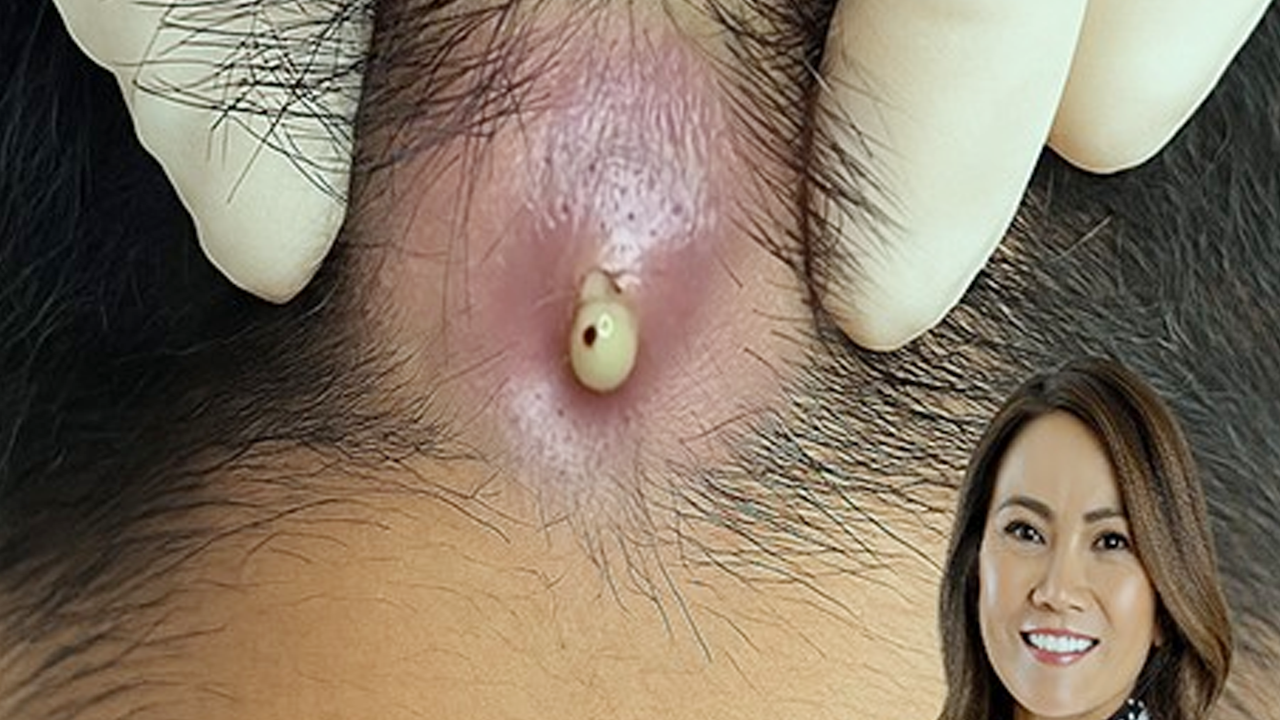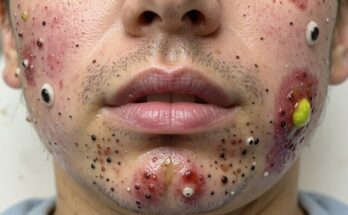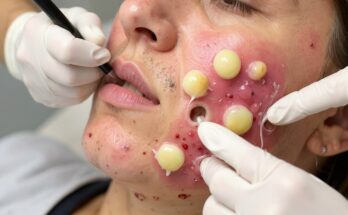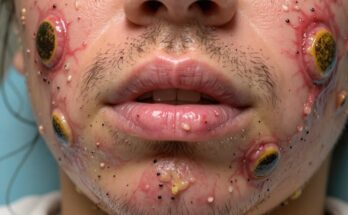Understanding and Treating Blackheads: A Comprehensive Guide
Blackheads, those pesky dark blemishes that seem to appear out of nowhere, are a common skin concern. But what exactly causes them, and how can we effectively address them? This comprehensive guide dives into the science behind blackheads, offers preventative measures, and explores various treatment options, from at-home remedies to professional interventions.
The Root Cause of Blackheads: A Clogged Pore
Blackheads, scientifically known as open comedones, form when a hair follicle becomes blocked. This blockage is a result of a buildup of dead skin cells, excess sebum (oil produced by the skin), and bacteria. The trapped mixture oxidizes, reacting with air, and this oxidation process is what gives blackheads their characteristic dark color. This isn’t dirt, as is a common misconception, but rather a chemical reaction. These clogged pores are most frequently found on the face (nose, forehead, chin), but can also appear on the chest and back.
Preventing Blackhead Formation: Proactive Skincare
Preventing blackheads is far easier than treating them. A consistent skincare routine plays a crucial role in minimizing their appearance. This involves:
Regular Cleansing: The Foundation of Clear Skin
Washing your face twice daily with a gentle cleanser is paramount. This removes excess oil, dirt, and debris that can contribute to pore blockages. Choose a cleanser formulated for your skin type – oily skin benefits from cleansers with salicylic acid, while sensitive skin may need a gentler, fragrance-free option.
Exfoliation: Unclogging the Pores
Exfoliating 2-3 times per week helps remove dead skin cells that accumulate on the skin’s surface and contribute to clogged pores. Choose a gentle exfoliant, such as a chemical exfoliant containing AHA or BHA, or a gentle scrub with fine particles. Avoid harsh scrubbing, as this can irritate the skin.
Treating Existing Blackheads: Options for Every Skin Type
Despite preventative measures, blackheads can still appear. Several treatment options are available, ranging from simple at-home remedies to professional medical procedures.
The Risks of At-Home Extraction
While tempting, squeezing or popping blackheads is strongly discouraged. Doing so incorrectly can lead to:
- Infected Pores: Pushing bacteria deeper into the skin, worsening inflammation.
- Scarring: Damaging the skin tissue, potentially resulting in permanent scarring.
- Spread of Infection: Causing further breakouts in surrounding areas.
Safe Extraction (for Whiteheads Only): A Step-by-Step Guide
If you absolutely must extract a pimple, it’s crucial to follow these steps, but only for whiteheads (pimples with a visible white tip):
- Cleanse: Thoroughly wash your hands and face with a gentle cleanser.
- Warm Compress: Apply a warm compress for 5-10 minutes to soften the skin and open the pore.
- Sterilize: Sterilize a thin needle or lancet with rubbing alcohol.
- Gentle Piercing (Optional): Gently pierce the surface of the whitehead, only to allow drainage. Avoid deep penetration.
- Gentle Pressure: Use clean cotton swabs to apply gentle, outward pressure. Stop immediately if nothing comes out.
- Disinfect: Disinfect the area with alcohol or benzoyl peroxide. Apply a soothing treatment, such as tea tree oil or a hydrocolloid patch.
- Avoid Picking: Allow the area to heal naturally. Do not pick at scabs.
Never Attempt to Extract:
- Cystic acne: Deep, painful, under-the-skin bumps.
- Nodules: Hard, inflamed lumps.
- The “Triangle of Death”: The area between the nose and upper lip, where infection can spread to deeper blood vessels.
Alternative Treatments: Professional and At-Home Solutions
For effective blackhead treatment, consider these alternatives:
- Spot Treatments: Products containing benzoyl peroxide, salicylic acid, or sulfur can help kill bacteria and reduce inflammation.
- Retinoids: These prevent clogged pores by increasing cell turnover.
- Hydrocolloid Patches: These absorb pus and protect the pimple from further irritation.
- Professional Help: A dermatologist can offer safe extraction, medical-grade treatments, and personalized advice.
- Oral Medications: For severe or persistent acne, oral antibiotics or isotretinoin (a stronger medication) may be prescribed.
- Laser Therapy: In certain cases, laser therapy can be effective in reducing acne lesions.
- Hormonal Treatment: For hormonal acne, addressing hormonal imbalances is crucial for long-term skin health.
Conclusion: A Holistic Approach to Clear Skin
Addressing blackheads effectively involves a combination of preventative measures and targeted treatments. Prioritize a consistent skincare routine, avoid harmful at-home extraction techniques, and consider professional guidance for persistent or severe cases. Remember, patience and consistency are key to achieving healthy, clear skin.



